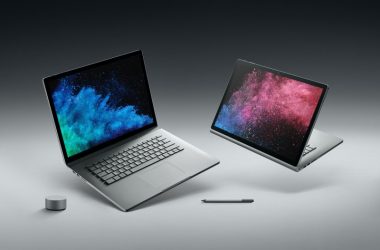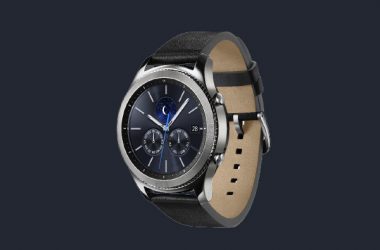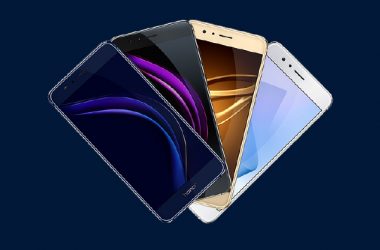 Tradeoffs accompany this printer’s low sticker price
Tradeoffs accompany this printer’s low sticker price
The small-office-oriented Canon ImageClass MF8080Cw color laser multifunction printer looks expensive, but it’s available for just $450 (as of November 9, 2011). After a couple of hours of enduring its lack of automatic duplexing, sluggish speed, and other drawbacks, however, you’ll understand why it’s so inexpensive. And your first trip to the store for consumables will provide another moment of realisation: The MF8080Cw’s toner is hardly bargain-priced.
The ImageClass MF8080Cw’s paper-handling features consist of a 150-sheet input tray, a 125-sheet output tray; a 50-sheet ADF, and a manual feed slot. These components are adequate for a small workgroup as long as users don’t want to scan or print in duplex. Though you can’t do anything about the lack of duplex scanning, manual duplex printing is available–you just need to find it. By default, it’s disabled; and to enable it, you have to visit a rather obscure location in the control-panel menus: adjustment, maintenance, special processing, special paper processing.
The MF8080Cw has some nice features–and a host of rough edges. Though the secure printing is nice, the labyrinthine process for enable manual duplexing is a head-scratcher. The five-line monochrome LCD display is fine, but the buttons could be better delineated (with larger text, better icons, and more of them). The printer driver is as terse and technical as they come–and everything is done just a bit differently or is located in a slightly unexpected place. In my hands-on evaluation, the Windows driver didn’t provide a list of paper types, but the Mac driver did; I could select the type of paper to use only at the printer itself.
Setup via ethernet and USB worked fine, and the MF8080Cw’s HTML configuration pages are well-rendered and logically laid out. Matters got a little dicier when we tried the wireless installation. First, you must power-cycle the MF8080Cw if you want to switch from ethernet to Wi-Fi, or vice versa. Also, you can’t connect both ethernet and Wi-Fi on the printer simultaneously.
More perplexingly, the MF8080Cw initially appeared incapable of detecting any of the Wi-Fi networks in our area. Apparently, the machine was overwhelmed by the 20+ Wi-Fi networks detectable in our wireless-saturated building. In locations with fewer networks, it list all of them without a hitch. This problem arose only when we used manual setup and searching for SSIDs, not when we tested it via WPS (Wi-Fi Protected Setup), which the unit also supports. Canon quickly provided a firmware update that partly corrected the detection problem; however, the MFP still detected only the 10 strongest network signals in the area. If you can’t find your network on that list, you can enter your network’s SSID manually via the control panel.
For a workgroup laser printer, the MF8080Cw prints slowly, primarily because of a tediously long wait for the first page of any document. Once the unit gets going, subsequent pages appear far more quickly. On-board memory is only 128MB, which might have something to do with the slow initial pages. Plain-text pages and pages with a mix of text and graphics printed at 7.2 pages per minute on the PC and 7.4 ppm on the Mac. A snapshot-size photo printed on the PC emerged in about 30 seconds (2 ppm) on either plain (Hammermill LaserPrint), or photo (Hammermill Color Laser Gloss) paper. Full-page photos printed on the Mac took about 38 seconds, which works out to 1.6 ppm. Both preview and full scan times were quite fast–less than 20 seconds for a full scan.
Generally, the print quality of the MF8080Cw was quite good. Text looked sharp, though it introduced a distinctly pink cast to monochrome graphics. The pinkness turned unacceptably purple in a grayscale version of a full-page color photo. Color photos seemed a tad grainy, but they had a lively and warm palette. In our group photo of PCWorld employees, however, everyone appear to be sporting a spray-on tan. Line-art scans suffered more distortion than we usually see.
The MF8080Cw’s toner costs disappointed us; and since the unit ships with 800-page “starter” cartridges, you’ll have to replace them rather quickly. Toner is easy to change via a slide-out tray that comes into view when you fold down the front panel. Replacement cartridges start with an $80 black cartridge that lasts 2300 pages, for a per page cost of about 3.5 cents. The $75 cyan, magenta, and yellow cartridges last for 1500 pages, or 5 cents per color per page. All told, a four-color page costs about 17.5 cents to print–a more expensive average than most inkjets offer.
If you don’t print a lot, the cheaper-printer-more-expensive-toner can work in your favor, but that rarely is the case with a workgroup printer–and it doesn’t square with the MF8080Cw’s 30,000-page monthly duty cycle. The warranty is for just one year, though the unit seems sturdily built and we had no trouble with the paper path.
The Canon ImageClass MF8080Cw’s lack of automatic duplexing, its pricey toner, its weak grayscale graphics, and its frustratingly long delay in producing the first page of any print job are good reasons to check the competition for a better deal. But most MFPs in this price range aren’t clearly better: The Dell 1355cnw is faster but has much more expensive toner, while the HP Laserjet Pro CM1415fnw is a little slower and its consumables are a little costlier. We recommend spending a little more and getting a better deal, such as with Canon’s similar-looking ImageClass MF8380Cdw, which is faster, produces better-looking output, and offers a better price on toner.





